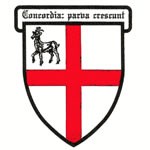
Of great importance were the furbearing creatures. Harriot noted that "All along the Sea coast there are great store of Otters, which being taken by weires and other engines made for the purpose, wil yeeld good profite." He also listed "Marterne furres" which are possible either the southeastern mink or the muskrat, the latter of which still lives in the marshes north of the Pamlico River. Harriot also mentioned "Saquenuckot" (probably the muskrat) and "Maquowoc" (probably mink) and the fact that they were edible. The black bear impressed the English because of its fur and its good meat. Another source of fur and meat was the gray squirrel. "Conies (rabbits), Those that we have seene, and all that we can heare of all of agey colour life unto hares: in some places there are such plenty that all the people of some townes make them mantles of the furre of some townes make them mantles of the furre or flue of skinnes of those they usually take. " Luzarnes (bobcats) were also in the area. One error that they made in describing animals was what they thought was the civet cat, a source of musklike material used in the making of perfume. It was instead the skunk or polecat. Deer were plentiful in the colony. "They differ from ours only in this, their tailes are larger, and the snags of the hornes looke backward" Their skins were also useful. Harriot said that "Deere skinnes dressed after the manner of Chamoes or undressed, are to be had of the naturall inhabitants thousands yeerely by way of traffique for trifles, and no wore waster of spoile of Deere than is or hath bene ordinarily in time before. " He listed "lyons" and "Woolves or Woolvish dogges" and said that he had heard of twenty-eight other kinds of animals; however, the English had seen only twelve of them. Although few of White's pictures of animals survive, he did leave us drawings of the loggerhead turtle, the land crab, the common bow tortoise, the diamond back terrapin and the alligator. One animal for which neither Harriot nor White left a record is one that intrigues the English and in the 18th century was described as "...a little Beast of a strange incredible nature, call'd the Apossume, it is about the bigness of a Pig of 2 months old; she hath comonly 7 young ones at a time, sometimes fewer, and til the young ones be 5 months old, she at her pleasure can take them all up into her belly, and putteth them forth again without hurt to herself or them at all; the Flesh of the Beast is a very pleasant, wholsome, and nourishing Food." The vast amount of water in the area was the source of both food and valuable materials. "Sometimes in feeding on muscles were found some pearle" and one man gathered a "fayre chaine" of them. They were to be presented to the queen, but unfortunately, were lost in 1586. Many fish lived in the area. For four months — February through May — there were plenty of sturgeons and herring, the latter including shad, in the nearby waters. Other fish included trout, porpoises, rays, oldwives, mullet and plaice (known in America today as flounder and sole). Other edible seafood included "sea crabbes," "oisters," "scalops" and "Crevises" (crayfish). The oysters lived in both salt and brackish water; however, the English preferred those from salt water. "Seekanaulk" (horseshoe crabs) were described as having good meat and their tails as the source for fish spears. "Tortoyses", a name used both for land and seas turtles and for terrapins, were the source of meat. Their eggs were also edible. Among White's surviving watercolors are paintings of the grouper, the dolphin and the flying fish. Copies exist of "Pashockshin" (Flounder) "The Playse". "A foote and a halfe in length;" "Chaham" and "Wundumaham" (Alfewife) "The hearing. 2 foote in length;" "Ribuckon" (White Perch); "Mesickek" (Striped Bass) "Some 5 or 6 foote in lengthe;" "Chigwusso" (Drum or Channel Bass) "Some 5 foote in length;" "Keetrauk" (Catfish) "Some 2 foote and a halfe in length;" and "Coppauseo" (Atlantic Sturgeon) "Some 10. 11. 12. or 13. foote in lengthe." Harriot described and John White painted the birds that they saw in the area. Harriot noted the "Turkie cocks and Turkie henns" that lived in the colony. He also referred to stockdoves, partridges, cranes (the Sandhill Crane which is now only an occasional visitor to North Carolina), hernes, "Swannes" (Trumpeter Swan), parrots, "Faulcons," and "Marlin haulks." Of White's paintings of birds, those of the frigate bird, the brown booby, and the pelican survive and, although the original paintings have been lost, copies of others survive. They include "Nahyapuw" (Bald Eagles) described as "...almost as bigg as an eagle;" "Tarawkow" (Sandhill Crane); "Peeawkoo" (Common Loon) and "Asanamawqueo" (Common Loon) "...As bigg as a Goose;" "Qvunzeick" (Red-Breaste Merganser) "...Of the bigness of a Duck; " "Meraseequo" (Red-Headed Woodpecker) "...As bigg as a Crow;" "Chuwhweeo" (Towhee) "Something bigger than a Blackbird;" "Messquouns" (Eastern Cardinal) "Almost as bigg as a Parratt;" "Quuruequaneo" (Yellow-Shafted Flicker) "A woodpecker. As bigg as a Pigeon;" "Attamockes" (Blue Jay) "The linguist. A bird that imitateth and useth the sound and tunes almost of all the birds in the contre. As bigg as a Pigeon." Curiously, two birds from the period — the Carolina parakeet and the Passenger Pigeon, both of which are now extinct — are not depicted. In the ensuing four centuries, many animals once native to this area have disappeared. Text by John D. Neville, Chairman, North Carolina 400th Anniversary Committee |
Last updated: April 14, 2015
